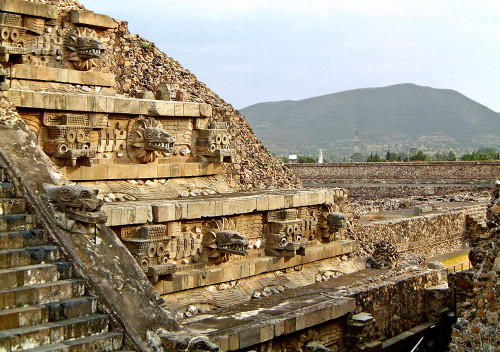
W2-0037: Temple of QuetzalcoatlUntil very recently, the Temple of the Feathered-Serpent at Teotihuacan was called the Pyramid of Quetzalcoatl, and it is also called the Temple of the Plumed-Serpent as a result of the Spanish name Templo de la Serpiente Emplumada. The Temple of the Feathered-Serpent takes its name from the iconic carved heads that adorn the eastern side (figs. W2-0037 & W2-0035). The exquisitely crafted beastly heads were added during the Temple of Quetzalcoatl’s initial construction in the 3rd century. The high-relief images alternate between a serpent’s head surrounded by feathers, and a crocodile’s head who wears a headdress. The former is easily identified as the Aztec creator god, Quetzalcoatl (a Nahuatl term which translates to “Feathered Serpent”). The latter was believed to be another central deity of the Aztec, named Tlaloc, on account of its goggle-eyes, but is now thought to the either the crocodile Cipactli or the Fire-Serpent. Between the heads is a bas-relief of a snake’s body, which features the skeletal rattle of a rattlesnake. On the talud section (the small sloping wall beneath the vertical tablero section) there are full-length bas-relief images of an undulating serpent.
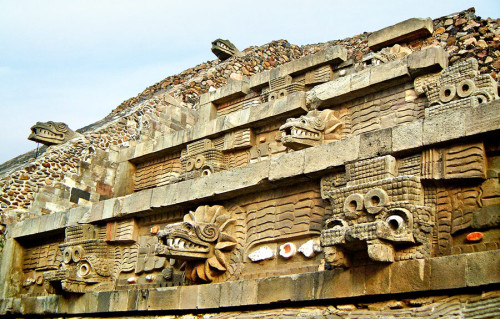 W2-0035: Temple of Quetzalcoatl Teotihuacano art was designed to convey ideas and record events – it was effectively their written language. It uses combinations of elements, known as pictographs and ideograms, to resemble objects, portray people, denote places, recount traditions, describe religious concepts, and record historical or celestial events. On the Temple of the Feathered Serpent, we are given a number of elements that are probably designed recount a story, a religious concept and an historical event all at once – which is very common. The most easily identifiable elements are found within the carved representations of Quetzalcoatl (fig. W2-0035C). Here, the feathers that surround the serpent’s head tell us that this is the feathered-serpent; the feathers then represent the petals of flowering crops and tell us that he brings the harvest; the feathers also represent rays of light and associate him with the Sun; meanwhile,
W2-0035: Temple of Quetzalcoatl Teotihuacano art was designed to convey ideas and record events – it was effectively their written language. It uses combinations of elements, known as pictographs and ideograms, to resemble objects, portray people, denote places, recount traditions, describe religious concepts, and record historical or celestial events. On the Temple of the Feathered Serpent, we are given a number of elements that are probably designed recount a story, a religious concept and an historical event all at once – which is very common. The most easily identifiable elements are found within the carved representations of Quetzalcoatl (fig. W2-0035C). Here, the feathers that surround the serpent’s head tell us that this is the feathered-serpent; the feathers then represent the petals of flowering crops and tell us that he brings the harvest; the feathers also represent rays of light and associate him with the Sun; meanwhile, 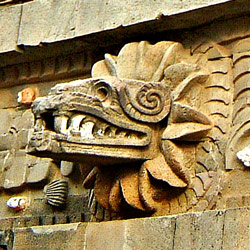
W2-0035C – Feathered Serpent the curling eyebrow represents duality (its a double spiral), infinity and the swirling cosmos. Unfortunately, the crocodile element is not so well known and is still being hotly debated. Aztec legend speaks of a crocodilian god, named Cipactli, who ate the other gods’ failed attempts at creating man at the end of each aborted epoch known as a Sun. Following the creation of the Fifth Sun, Quetzalcoatl and Tezcatlipoca ensnared her and ripped her in two to create the land on which humans could live (the hilly terrain of the highlands is very reminiscent of the scaly back of a crocodile). Because of her role at the beginning of the Fifth Sun, she was designated the first of the 20 days signs on the ritual 260 day calendar and can be seen on the Aztec Calendar Stone in the first position anti-clockwise from the top on the inner-circle. The crocodilian element wears a headdress that features a talud-tablero temple and two circles (possibly obsidian mirrors, the eyes of Tlaloc, or warrior goggles), which represents Teotihuacan. Therefore the crocodilian aspect together with the Feathered-Serpent tells us that the Fifth Sun was created by Quetzalcoatl at Teotihuacan.
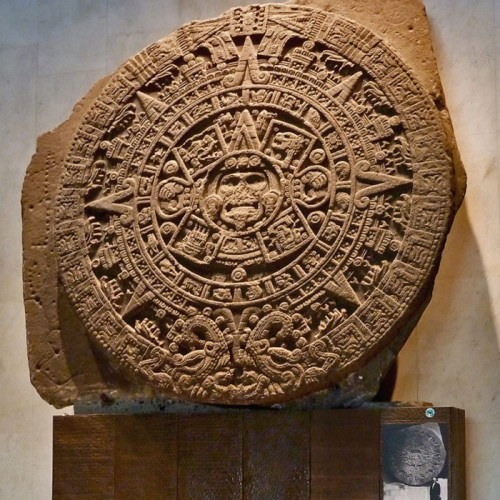
W4-0005: Aztec Calendar Stone However, other sources suggest that the crocodilian element, with its protruding snout, may refer to the Fire Serpent who was known to the Aztecs as Xiuhcoatl. He also appears on the Aztec calender stone around the outer-edge with his left and right profiles meeting at the bottom with his elongated snout curling back (fig. W4-0005). He was was believed to guide the sun across the sky and represented the ecliptic plane. Looking at the crocodilian element on the Temple of the Feathered Serpent, it does appear that the snout curls up when viewed in profile. Looking at the Aztec Calendar Stone, the same rattle element that appears on the Temple of Quetzalcoatl is also found near Xiuhcoatl’s tail (at about 11 o’clock and 1 o’clock on the outer ring. Therefore, it would appear that the projecting carved heads on the tablero section of the Temple of the Feathered Serpent are alternating images of the Feathered Serpent, with a normal snake tail (leading to the right in figs. W2-0037 & W2-0035), and the Fire Serpent, with its rattlesnake tail (leading to the right in figs. W2-0037 & W2-0035).
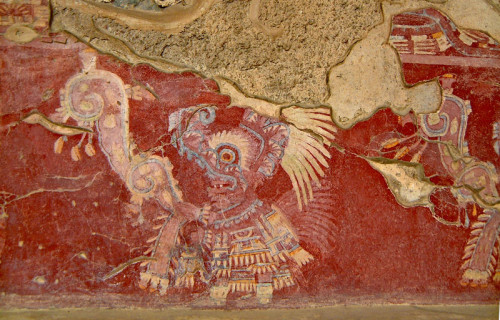 W2-0024: Tepantitla HeaddressIdentical symbolism can be found in the headdresses worn by the priests of the Teotihuacan precinct of Tepantitla. The priests are depicted sowing seeds or giving offerings to the earth (see fig. W2-0024). Their headdresses combine an elongated curling snout with the eye of an owl and the feathers of the quetzal. The curling snout is identical to that found on the Aztec Calendar Stone – which, considering the mural of Tepantitla was created before 400AD and the calendar stone was produced in 1479AD, is quite exceptional. But, at Tepantitla the element is clearly crocodilian and looking again at the Aztec Calendar Stone, there is clearly a crocodilian arm located just behind each of Xiuhcoatl’s heads at the very bottom of the disc. Also, the imagery on the Calendar Stone reflects the legend of Cipatli being ripped in two, so perhaps the Fire-Serpent and Cipatli are two aspects of the same being. Either way, both characters appear to represent a fundamental element of the ritual calendar and possibly even the creation of time and the cosmos.
W2-0024: Tepantitla HeaddressIdentical symbolism can be found in the headdresses worn by the priests of the Teotihuacan precinct of Tepantitla. The priests are depicted sowing seeds or giving offerings to the earth (see fig. W2-0024). Their headdresses combine an elongated curling snout with the eye of an owl and the feathers of the quetzal. The curling snout is identical to that found on the Aztec Calendar Stone – which, considering the mural of Tepantitla was created before 400AD and the calendar stone was produced in 1479AD, is quite exceptional. But, at Tepantitla the element is clearly crocodilian and looking again at the Aztec Calendar Stone, there is clearly a crocodilian arm located just behind each of Xiuhcoatl’s heads at the very bottom of the disc. Also, the imagery on the Calendar Stone reflects the legend of Cipatli being ripped in two, so perhaps the Fire-Serpent and Cipatli are two aspects of the same being. Either way, both characters appear to represent a fundamental element of the ritual calendar and possibly even the creation of time and the cosmos.
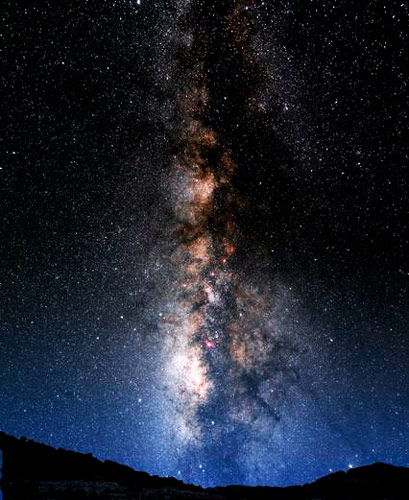
W1-GR: The serpentine Great Rift descends to earth A tunnel beneath the Pyramid of Quetzalcoatl also contains strong references to the cosmos, with hundreds of clay spheres covered in golden pyrite littering the floor and metallic dust rubbed on the walls. The combined effect resembles a passage-way through space when illuminated by torchlight. Discoveries are still being made by archaeologists with the assistance of a small robot named Tlaloc II, but thus far there is no evidence that either the tunnel or the three caves located at its end were used or designed for elite burials as had once been thought. Instead, it appears the tunnel and cave network was a shrine to the cosmos and the gods of creation. Caves themselves are though to have been the place where gods were born, and it is possible that the Teotihuacan elite used the caves beneath the Temple of Quetzalcoatl to give birth, with the newborn baby being carried through the starry tunnel and out into the world, as though they were being born from a cosmic womb or descending from the heavens. In Mayan mythology, the crocodile was associated with the Great Rift, a darkened patch within the Milky Way. This strange darkened, serpent-like, passage was also considered the womb (or vagina) of the galaxy, from which planets, stars, the cosmos and time itself were born (see fig. W1-GR). It is very possible that the crocodilian form on the Temple of the Feathered was also associated with this facet of the night-sky and therefore represents the birth of the cosmos, and the beginning of time. With four stepped, talud-tablero levels, it is also possible that the Temple of the Feathered Serpent was also designed to commemorate the four preceding suns, with a temple on top dedicated to the Fifth Sun.
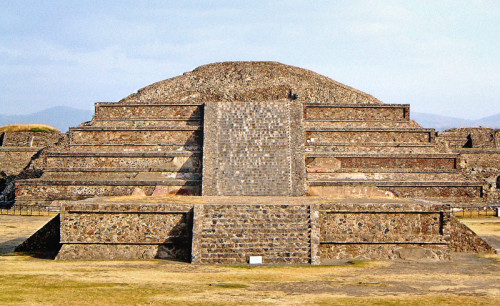
W2-0032: Adosado platform adjoined to the Temple of QuetzalcoatlThe reason that the western face of the Pyramid of Quetzalcoatl has been so well preserved is that it was buried beneath the “Adosado” platform that was added to the front (fig. W2-0032). Some suggest that this was a deliberate attempt to cover the Pyramid’s iconic façade and alter its purpose. However, all three of Teotihuacan’s great pyramids had one of the features added – for reasons unknown – and the three other faces of the Temple of the Feathered Serpent were still left exposed. Taking the exposed face as an approximate, it is thought that the combined four faces would have totalled 260 Feathered-Serpent heads, thus equalling one for each day of the ritual calendar. It is then thought that the small gap between the teeth at the front would have been used to leave offerings or place a day marker, leaving a visible indication to the population of what day it was. Burials found within the foundations of the Temple of the Feathered Serpent also suggest a strong link with the ritual calendar. Thus far, more then 200 sacrificial victims have been found, with their hands bound behind their backs and their bodies strategically placed. Archaeologists are convinced that once excavation is complete, this body count will equal 260 and therefore each represent one day of the Sacred Calendar.
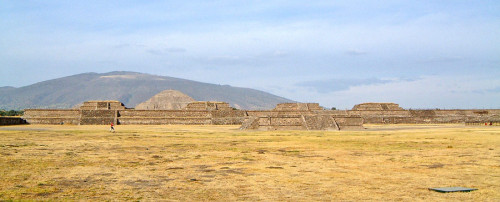 W2-0033: North flank of the CitadelAround the perimeter of the Ciudadela complex in which the Temple of the Feathered Serpent sits, there are 11 other much smaller pyramidal structures constructed on a raised base, with four on each side and three to the rear (four of these are visible in fig. W2-0024). Add the Adosado platform and the Temple of the Feathered-Serpent to these smaller pyramids and you have 13 – one for each day of a Trecena. This final piece of evidence appears to conclusively demonstrate that the Pyramid of the Feathered-Serpent was dedicated to the Ritual Calendar and the festivities that took place. The Ciudela enclosure is the largest defined space at Teotihuacan and measures a massive 130m2. It would have been able to accommodate the entire population, which numbered in excess of 100,000 people. Two large complexes of rooms that mirror one another on either side of the Temple of the Feathered Serpent, would have provided ideal preparation areas for the festivities and accommodation for the priests who kept account of the days. At the heart of this complex lies the Temple of the Feathered Serpent, which appears to have been designed to record the creation of the cosmos and the passing of time from that day hence. Put simply, the Temple of the Feathered-Serpent appears to be a monument to time and the heart of a giant clock, by which the Teotihuacano’s honoured their gods.
W2-0033: North flank of the CitadelAround the perimeter of the Ciudadela complex in which the Temple of the Feathered Serpent sits, there are 11 other much smaller pyramidal structures constructed on a raised base, with four on each side and three to the rear (four of these are visible in fig. W2-0024). Add the Adosado platform and the Temple of the Feathered-Serpent to these smaller pyramids and you have 13 – one for each day of a Trecena. This final piece of evidence appears to conclusively demonstrate that the Pyramid of the Feathered-Serpent was dedicated to the Ritual Calendar and the festivities that took place. The Ciudela enclosure is the largest defined space at Teotihuacan and measures a massive 130m2. It would have been able to accommodate the entire population, which numbered in excess of 100,000 people. Two large complexes of rooms that mirror one another on either side of the Temple of the Feathered Serpent, would have provided ideal preparation areas for the festivities and accommodation for the priests who kept account of the days. At the heart of this complex lies the Temple of the Feathered Serpent, which appears to have been designed to record the creation of the cosmos and the passing of time from that day hence. Put simply, the Temple of the Feathered-Serpent appears to be a monument to time and the heart of a giant clock, by which the Teotihuacano’s honoured their gods.

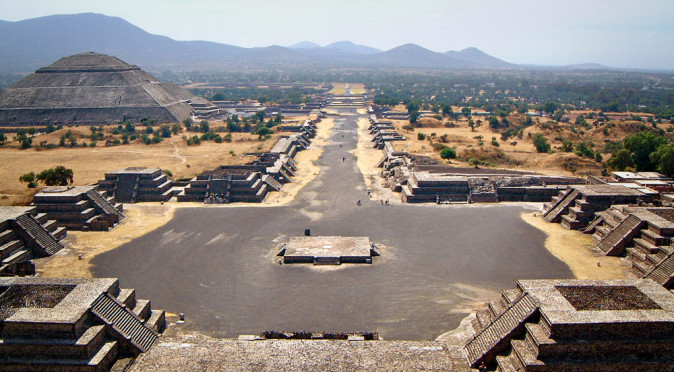
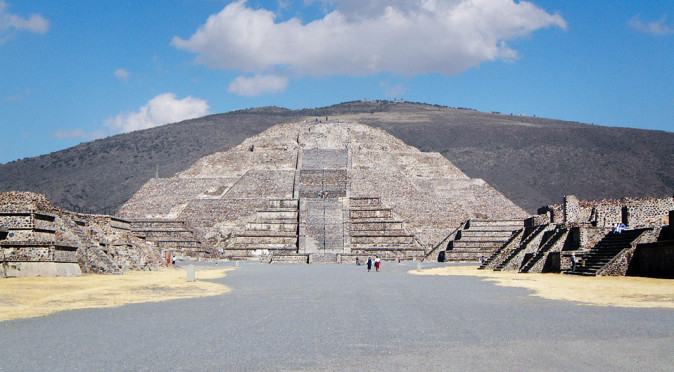
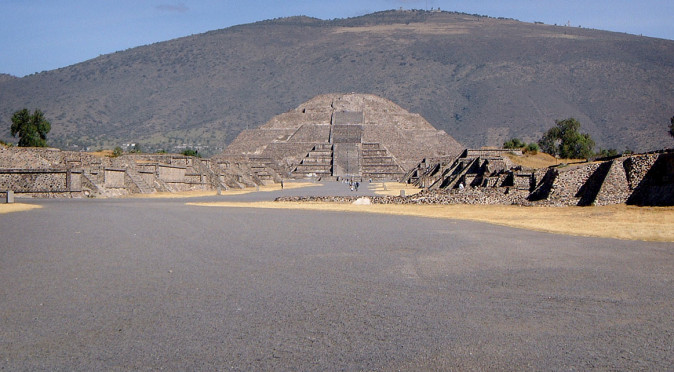
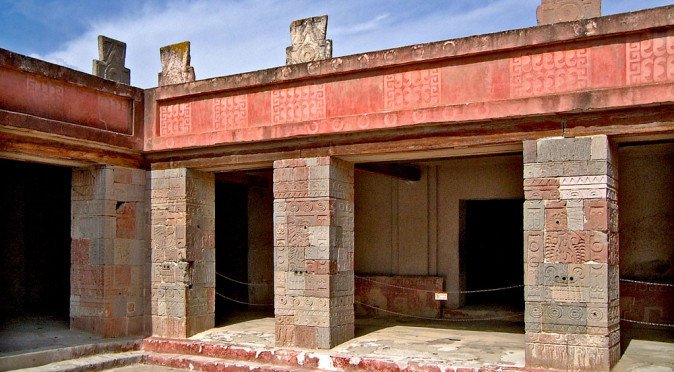
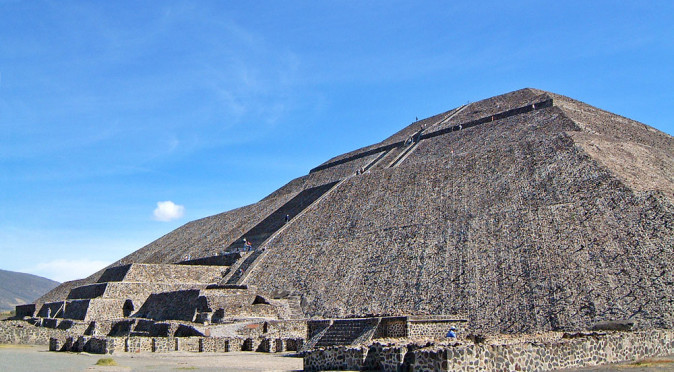
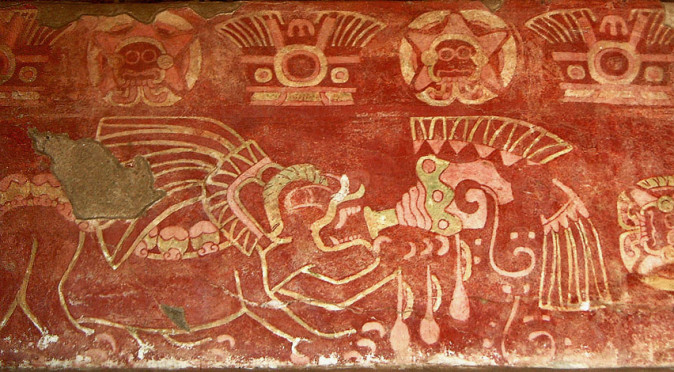
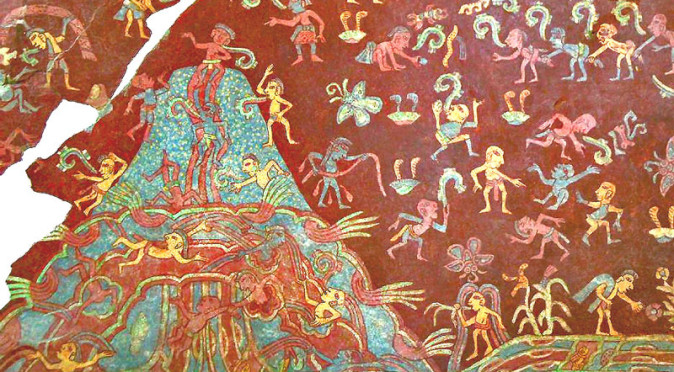
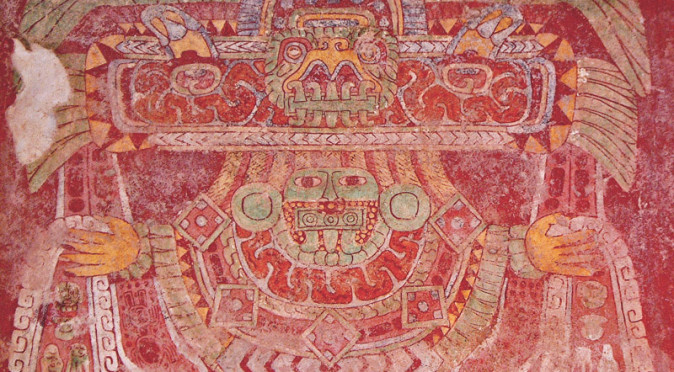
Hello this was no help for me for the answer I was looking for
Hi Jenny, What information were you looking for? Thanks, Robin
Thank you for this read. Cataclysmic events in near ancient history seem to be almost a taboo of sorts, so reading this brilliant article and others like it from different civilizations at different times is helping me create a unprofessional, semi-fantastic hypothesis about cosmic related cataclysms and it’s place in the lore/mythology/oral traditional tales. So far I’m finding some interesting coincidence and parallels across many different ancient cultures. It’s almost like there is a missing link in the accepted collective thought of human history. I am also finding it hard to continue the attempt of approach as a skeptic when presented with these various materials. It seems there is still a part of me that allows for a very active imagination when only barebones ideas are implying very shallow scenarios. Thanks again.